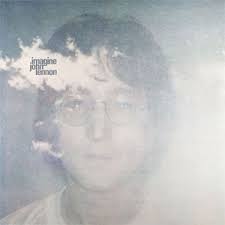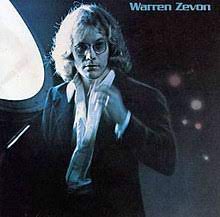Tutorial Pricing: $3.25ea OR any 10 for $10
(use code "Any10410" at checkout)
Paid Requests for $25ea
(comes with any 8 freebies -> so 9 for $25)
100's Of Free Demos & Chord Sheets
Rod Stewart Unplugged Hit Songs
On The Acoustic

Welcome to my Rod Stewart unplugged hit songs guitar lessons page!
Whether you're a seasoned guitarist or just starting out, this page offers a treasure trove of resources to help you master the acoustic guitar stylings of the legendary Rod Stewart.
Dive into my collection of free demo tutorials, where you'll learn to play some of Rod's most iconic songs with step-by-step guidance. Enhance your practice sessions with our complimentary chord sheets, providing you with the essential framework to recreate Rod's timeless melodies.
Plus, explore a variety of rhythm
patterns to infuse authenticity into your renditions. Get ready to
strum, pluck, and groove your way through Rod Stewart's catalog like
never before!Full lesson tutorials are available for a small fee below.
Here on this Rod Stewart unplugged hit songs page you'll find a collection of free demos, full lesson tutorials available for purchase along with several free chord sheets in .pdf format and some rhythm tips on playing each song and a bit of info on some of the best of Rod Stewart top songs on the acoustic.
Jump links to quickly access sections
Rod Stewart Unplugged Hit Songs Overview Video
1. Forever Young
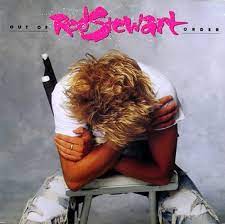
Forever Young by Rod Stewart is a heartfelt tune he penned for his 1988 album "Out of Order," inspired by the Bob Dylan song of the same name. Stewart sought Dylan's approval, even agreeing to pay royalties, before releasing his rendition.
The track climbed to #12 in the US and #9 in Canada, marking a notable success on the charts. Since its debut, Stewart has revisited the song, re-recording it multiple times.
In the original version, a drop D tuning and capo on the 2nd fret set the stage, creating a distinctive sound. Rhythmically, a steady shuffle pattern accompanies the chords D, G, A, Bm, and Em, evoking a timeless vibe.
Interestingly, "Forever Young" is distinct for its lack of lead guitar parts, allowing the focus to remain on Stewart's emotive vocals and the song's poignant lyrics.
Jump To Top
2. I Don't Want To Talk About It
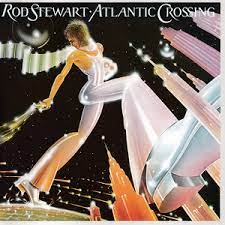
I Don't Want to Talk About It famously covered by Rod Stewart, originated as a song by Neil Young's Crazy Horse Band in 1971, written by Danny Whitten, a member of Crazy Horse at the time. Despite its earlier release, it gained widespread popularity through various cover versions over the years.
Stewart's rendition, featured on his "Atlantic Crossing" album in 1988, became a chart-topping hit, reaching #1 and solidifying its place as one of his signature songs. The song's original key involves a capo on the 3rd fret, utilizing chords like Am, D, G, D/Gb, Em, and Dsus.
The rhythmic pattern follows a root-up-down-up-down-up-down-up sequence, adding to the song's emotional depth.
Notably, "I Don't Want to Talk About It" features some lead guitar playing, adding texture and nuance to Stewart's poignant vocals and the song's introspective lyrics.
Jump To Top
3. Maggie May
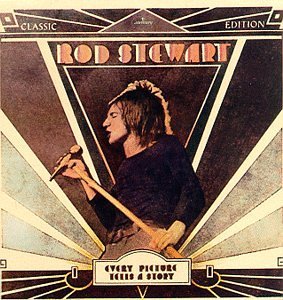
In the vibrant musical landscape of 1971, "Maggie May" emerged as a defining anthem, solidifying Rod Stewart's status as a rock icon. Released as a single from his third studio album, "Every Picture Tells a Story," the song soared to the top of both the UK and US charts, captivating audiences with its raw energy and infectious melody.
Notably, the album itself garnered critical acclaim, earning third place in the Jazz & Pop critics' poll for best album of the year. With all five members of Faces contributing to the recording, including guitarist/bassist Ronnie Wood and keyboardist Ian McLagan on Hammond B3 organ, "Maggie May" showcased the band's dynamic chemistry and Stewart's unmistakable vocals.
The song's rhythmic pattern, characterized by a root-down-up-down-up down-up sequence, sets the stage for stirring picking sequences that punctuate the narrative. Utilizing a capo on the second fret to maintain the original key of D, the song features the chords C, G, F, Dm, Em, and Gsus, each adding depth and texture to the iconic melody.
As a timeless classic, "Maggie May" continues to resonate with audiences, its spirited tale of love and longing leaving an indelible mark on the annals of rock history.
Jump To Top
4. Mandolin Wind
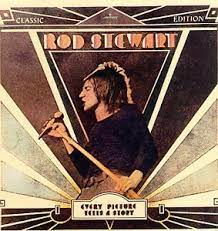
Mandolin Wind, a standout track from Rod Stewart's 1971 album "Every Picture Tells a Story," holds a special place among fans and critics alike, despite never being released as a single.
Many argue that its poignant melody and heartfelt lyrics could have propelled it to the top of the charts. Interestingly, the song's influence extends beyond Stewart's rendition.
In 1972, the Everly Brothers recorded their own version for their album "Stories We Could Tell," followed by Earl Scruggs in 1977 for his album "Strike Anywhere." Additionally, speculation surrounds the identity of the mandolin player on Stewart's recording, with some suggesting it could have been Davey Johnstone, who later joined Elton John's band as a guitarist.
"Mandolin Wind" is played in standard tuning with a capo on the 2nd fret, featuring a simple yet captivating rhythm of steady up-and-down strumming. The song's structure revolves around three basic chords—A, G, and D—with occasional riffs adding depth to its melodic charm.
Notably, "Mandolin Wind" eschews heavy lead guitar, allowing Stewart's emotive vocals and the song's evocative storytelling to take center stage.
Jump To Top
5. Ooh La La
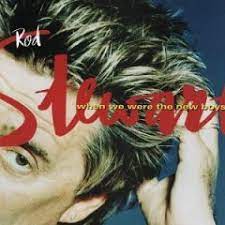
Ooh La La, a classic tune written by Ronnie Lane and Ronnie Wood in 1973, originated during their time as members of the band Faces, alongside Rod Stewart. Initially, both Lane and Stewart attempted lead vocals for the song, but ultimately, they decided Ronnie Wood should take the lead, given his soulful delivery.
Notably, Ronnie Wood is renowned as the guitarist for The Rolling Stones, adding to the song's pedigree. In 1998, Rod Stewart revisited "Ooh La La" for his album "When We Were The New Boys," where it enjoyed success, reaching the top 40 charts in several countries.
The song is played in standard tuning, featuring the chords D, Em, G, and A7, with a capo on the 1st fret to match the original key. The rhythm consists of a simple root-up-down-up pattern, maintaining the song's laid-back groove.
Additionally, "Ooh La La" incorporates some picking techniques, adding depth and texture to its folk-rock sound. As a testament to its enduring appeal, the song continues to captivate audiences with its heartfelt lyrics and infectious melody.
Jump To Top
6. Sailing
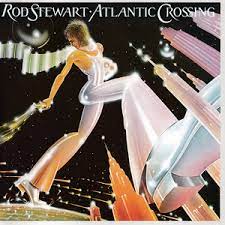
Sailing, originally written and recorded by the Sutherland Brothers in 1972, found its way into Rod Stewart's repertoire thanks to his girlfriend at the time, who introduced him to the duo's music.
Stewart included the song on his 6th studio album, "Atlantic Crossing," released in 1975. Surprisingly, Stewart had no plans to release "Sailing" as a single, but its undeniable charm led to its unexpected success.
The song soared to #1 in several European countries, although it peaked at #58 in the US.
"Sailing" is played in standard tuning, featuring a variety of chords including G, A, Gbm, D, B7, Bm, E, and E7. Its distinctive sound begins with an arpeggio before transitioning into a rhythmic pattern of down-up strumming, creating a captivating groove.
Notably, "Sailing" also showcases some acoustic lead work, adding a touch of finesse to its melodic arrangement. Despite its humble beginnings, "Sailing" remains a timeless classic, beloved by audiences worldwide for its emotive lyrics and memorable melody.
Jump To Top
7. Some Guys Have All The Luck
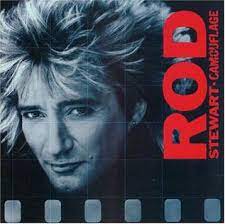
Some Guys Have All the Luck was originally written by Jeff Fortgang and gained attention when it became a top 40 hit for the group The Persuaders in 1973, peaking at #39.
However, it wasn't until 1984 that Rod Stewart released his rendition, which soared to #10 on the US Billboard Hot 100 Chart. Fortgang, a Yale graduate, penned numerous songs during his brief stint in the music industry, although "Some Guys Have All the Luck" wasn't included on his solo album released in 2013.
Interestingly, the song features a bit of lead picking, adding a dynamic layer to its acoustic arrangement. Chords like D, Bm, C, A7sus, A7, A, and G form the backbone of the song, allowing aspiring guitarists to recreate its infectious melody.
For rhythm, a combination of down-up strumming patterns sets the groove, creating a lively and engaging atmosphere. Despite its origins with The Persuaders, Rod Stewart's version solidified the song's status as a timeless classic, beloved by audiences for its catchy tune and relatable lyrics.
Jump To Top Of Rod Stewart Unplugged Hit Songs
8. The First Cut Is The Deepest
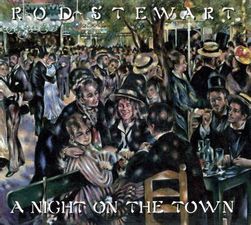
The First Cut Is the Deepest is a song that must have brought a smile to Cat Stevens' face when he wrote it, little did he know it would become a hit for six different artists over the years. P.P. Arnold first recorded the song in 1967, followed by Keith Hampshire in 1973, and then Rod Stewart in 1977.
The song's popularity continued with versions by Dawn Penn in 1994, Papa Dee in 1995, and Sheryl Crow in 2003.
Played in standard tuning with just three chords—A, D, and E—the song starts with delicate arpeggio before transitioning into a rhythmic pattern of down-up strumming. Additionally, the song features some guitar picking, adding depth to its acoustic arrangement.
With its universal theme of heartbreak and resilience, "The First Cut Is the Deepest" has resonated with audiences for decades, earning its place as a timeless classic in the realm of popular music.
Jump To Top Of Rod Stewart Unplugged Hit Songs
9. The Killing Of Georgie
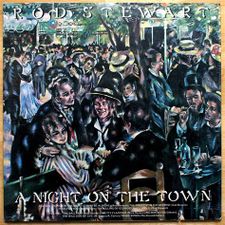
The Killing of Georgie is a poignant song penned by Rod Stewart in 1976, which soared to #2 on the UK charts.
Divided into two parts, the song's uptempo Part I contrasts with the more somber Part II, depicting the tragic story of a gay man who met his demise in New York City. Stewart revealed that the song was inspired by one of his former bandmates in Faces.
Released as part of his album "A Night on the Town," the song garnered moderate success globally, reaching positions such as No. 25 in the Netherlands, No. 30 in the US, and No. 33 in Canada.
Played in standard tuning with a capo on the 3rd fret, the song features chords like G, Gmaj7, C, Dm, A#, and Csus, with an optional F or Fm chord for the ending. The rhythm follows a root-down-root-up-down-up pattern throughout. Notably, the song lacks any intricate picking for the acoustic guitar, allowing the emotive lyrics and melody to take center stage.
"The Killing of Georgie" remains a powerful testament to Stewart's storytelling prowess and his ability to tackle sensitive subject matter through music.
Jump To Top Of Rod Stewart Unplugged Hit Songs
10. They Can't Take That Away From Me

Rod Stewart's rendition of "You Can't Take That Away from Me" pays homage to the classic song written by George Gershwin in 1937. Featured on Stewart's 2002 album of Pop Standards, the song made its mark as a single, reaching #27 on the Adult Contemporary chart.
Played in standard tuning, the song boasts a variety of chords including D, F, Eb, Edim, Am7, Am7/b, G7, Bm, E7, A7, and Gmaj7. Stewart's version includes some acoustic lead playing, adding depth to the arrangement.
The rhythm pattern follows a simple down-up-down-down sequence, guiding listeners through the chord sequence with ease.
As a timeless classic, "You Can't Take That Away from Me" showcases Stewart's versatility as an artist and his ability to breathe new life into beloved standards from decades past.
Jump To Top Of Rod Stewart Unplugged Hit Songs
11. You Wear It Well
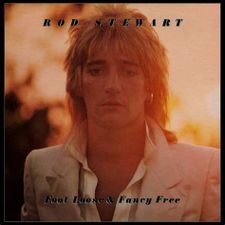
You Wear It Well is a standout track from Rod Stewart's 1972 album "Never a Dull Moment," and achieved remarkable success, hitting #1 in the UK and #13 in the US. This song shares a similar vibe with Stewart's previous hit, "Maggie May," which resonated with audiences in 1971.
Recorded for the album and released as a single in August 1972, "You Wear It Well" captivated listeners worldwide. Stewart performed a memorable live rendition on BBC's Top of the Pops, accompanied by the full lineup of Faces, as well as additional musicians on classical guitar and fiddle.
A live version from Stewart's 2013 performance at the Troubadour in West Hollywood was later included in the deluxe edition of his album "Time."
Played in standard guitar tuning, "You Wear It Well" incorporates some lead work for the acoustic guitar, adding texture to the arrangement. Chords like D, Em, D/Gb, G, A7sus, A7, and A form the foundation of the song, while the rhythmic pattern follows a root-down-up-root-up-down-up sequence, creating a captivating groove.
As a testament to its enduring popularity, "You Wear It Well" remains a beloved classic in Rod Stewart's repertoire, cherished by fans for its catchy melody and timeless appeal.
Jump To Top Of Rod Stewart Unplugged Hit Songs
12. You're In My Heart

You're in My Heart, released in 1977 as a single from the album "Foot Loose And Fancy Free," soared to the top 10 charts in numerous countries, cementing its status as a classic hit. Penned by Rod Stewart himself, the song reached #1 in Australia and Canada, while also peaking at #4 on the Billboard Hot 100 in the US.
Notably, "You're in My Heart" holds the distinction of being a fan favorite and a commercial success worldwide.
Played in standard tuning and featuring chords like D, Dbm, Bm, A, G, C, B, Am, and Edim, the song requires a capo on the 2nd fret to match the recording. While the acoustic version lacks any lead work, its simple yet captivating rhythm, characterized by a root-up-down-up pattern with occasional stops, captures the essence of the song's emotive melody.
As a beloved classic in Rod Stewart's repertoire, "You're in My Heart" continues to resonate with audiences, its heartfelt lyrics and infectious tune leaving a lasting impression on listeners around the globe.
Jump To Top Of Rod Stewart Unplugged Hit Songs
If you liked this Rod Stewart page you might also like ... (click images)
Thank you for stopping by my Rod Stewart unplugged hits songs page. I hope this info was helpful. Next time you're at a party and someone yells to play Rod Stewart songs, you'll be prepared.
Rod Stewart Documentary
Acoustic Versions Of Rock Songs
